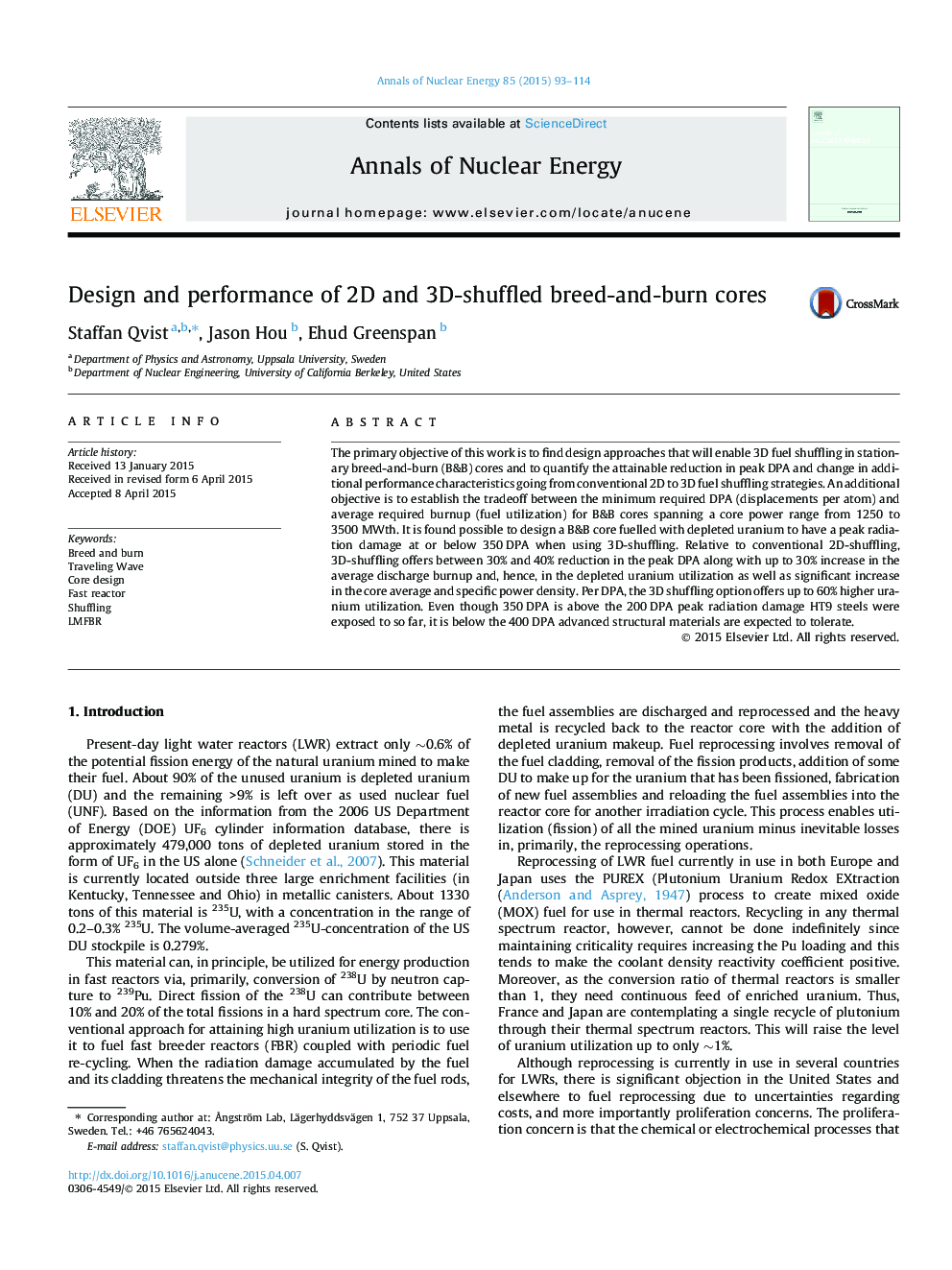| Article ID | Journal | Published Year | Pages | File Type |
|---|---|---|---|---|
| 8068157 | Annals of Nuclear Energy | 2015 | 22 Pages |
Abstract
The primary objective of this work is to find design approaches that will enable 3D fuel shuffling in stationary breed-and-burn (B&B) cores and to quantify the attainable reduction in peak DPA and change in additional performance characteristics going from conventional 2D to 3D fuel shuffling strategies. An additional objective is to establish the tradeoff between the minimum required DPA (displacements per atom) and average required burnup (fuel utilization) for B&B cores spanning a core power range from 1250 to 3500Â MWth. It is found possible to design a B&B core fuelled with depleted uranium to have a peak radiation damage at or below 350Â DPA when using 3D-shuffling. Relative to conventional 2D-shuffling, 3D-shuffling offers between 30% and 40% reduction in the peak DPA along with up to 30% increase in the average discharge burnup and, hence, in the depleted uranium utilization as well as significant increase in the core average and specific power density. Per DPA, the 3D shuffling option offers up to 60% higher uranium utilization. Even though 350Â DPA is above the 200Â DPA peak radiation damage HT9 steels were exposed to so far, it is below the 400Â DPA advanced structural materials are expected to tolerate.
Related Topics
Physical Sciences and Engineering
Energy
Energy Engineering and Power Technology
Authors
Staffan Qvist, Jason Hou, Ehud Greenspan,
